Ho Chi Minh City, Vietnam
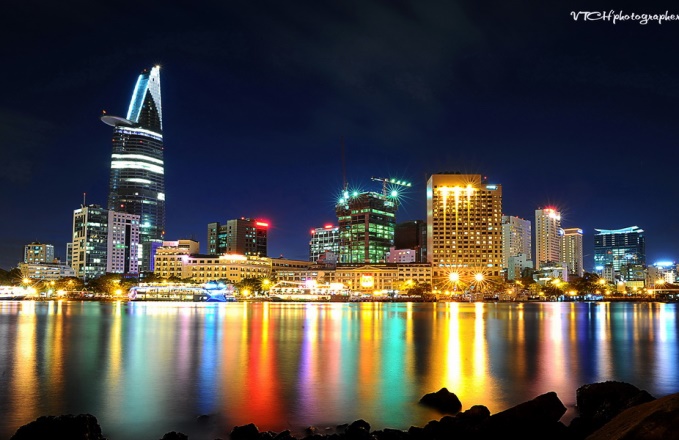
The “Pearl of the Orient”
 Saigon – which was once dubbed the “Pearl of the Orient”, is a commercial center and convergence of multiple ethnic groups. Each ethnic group has its own belief, cultural identity which contributes to a diversity of culture. Travel to Saigon - Ho Chi Minh City more than 300 years old, you can see the high-rise buildings which located in close proximity to one another, the amusement parks, busy shopping centers. Not only is Saigon luxurious but it has ancient villas glass which the house has traditional markets existed for hundreds of years. Saigon is large and isn’t shortage of "specialty" such as tourism excursions by boat along the Saigon River, visiting West Pham Ngu Lao Street, shopping at Ben Thanh market or on Can Gio Beach.
Saigon – which was once dubbed the “Pearl of the Orient”, is a commercial center and convergence of multiple ethnic groups. Each ethnic group has its own belief, cultural identity which contributes to a diversity of culture. Travel to Saigon - Ho Chi Minh City more than 300 years old, you can see the high-rise buildings which located in close proximity to one another, the amusement parks, busy shopping centers. Not only is Saigon luxurious but it has ancient villas glass which the house has traditional markets existed for hundreds of years. Saigon is large and isn’t shortage of "specialty" such as tourism excursions by boat along the Saigon River, visiting West Pham Ngu Lao Street, shopping at Ben Thanh market or on Can Gio Beach.

“Saigon by night”
Ho Chi Minh City's climate is classified as tropical wet and dry, meaning that it is warm all year round and divided into two distinct seasons, the wet season and the dry season, rather than spring, summer, fall and winter. The rainy season lasts from May through October, and the dry season runs from December to April.
Saigon tourist attractions
- Notre-Dame Cathedral Basilica of Saigon
 Notre-Dame Cathedral Basilica of Saigon, officially Cathedral Basilica of Our Lady of The Immaculate is located in the downtown of Ho Chi Minh City, Vietnam. It is one of the most ancient cathedrals and has unique design in Vietnam. It’s one of Ho Chi Minh city’s most-visited tourist attractions. The outside wall of Notre-Dame Cathedral Basilica of Saigon was built with bricks from Marseille. Although the contractor did not use coated concrete, these bricks have retained their bright red color until today.
Notre-Dame Cathedral Basilica of Saigon, officially Cathedral Basilica of Our Lady of The Immaculate is located in the downtown of Ho Chi Minh City, Vietnam. It is one of the most ancient cathedrals and has unique design in Vietnam. It’s one of Ho Chi Minh city’s most-visited tourist attractions. The outside wall of Notre-Dame Cathedral Basilica of Saigon was built with bricks from Marseille. Although the contractor did not use coated concrete, these bricks have retained their bright red color until today.

 Independence Palace (Dinh Độc Lập), also known as Reunification Palace (Vietnamese: Dinh Thống Nhất), built on the site of the former Norodom Palace, is a landmark in Ho Chi Minh City, Vietnam. It was the site of the end of the Vietnam War during the Fall of Saigon on April 30, 1975, when a North Vietnamese Army tank crashed through its gates.
Independence Palace (Dinh Độc Lập), also known as Reunification Palace (Vietnamese: Dinh Thống Nhất), built on the site of the former Norodom Palace, is a landmark in Ho Chi Minh City, Vietnam. It was the site of the end of the Vietnam War during the Fall of Saigon on April 30, 1975, when a North Vietnamese Army tank crashed through its gates.
Wandering around its rooms, visitors may be reminded of various important moments in the past of Vietnam, especially the war command room with its huge maps and old communication equipment, as well as the basement labyrinth. The building now functions as a museum. The Reunification Palace is open all the week from 7.30 AM to 11.30AM and 1.00PM to 5.00 PM.

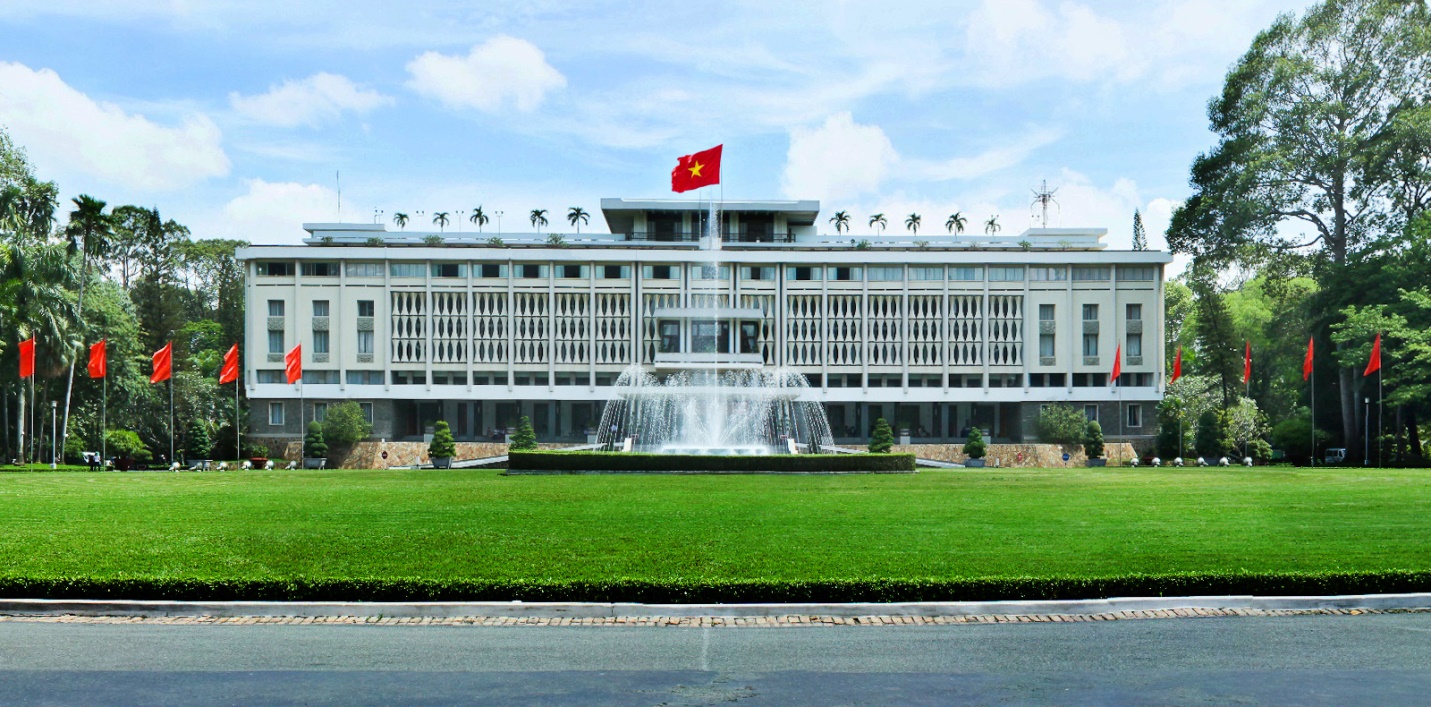
Wandering around its rooms, visitors may be reminded of various important moments in the past of Vietnam, especially the war command room with its huge maps and old communication equipment, as well as the basement labyrinth. The building now functions as a museum. The Reunification Palace is open all the week from 7.30 AM to 11.30AM and 1.00PM to 5.00 PM.
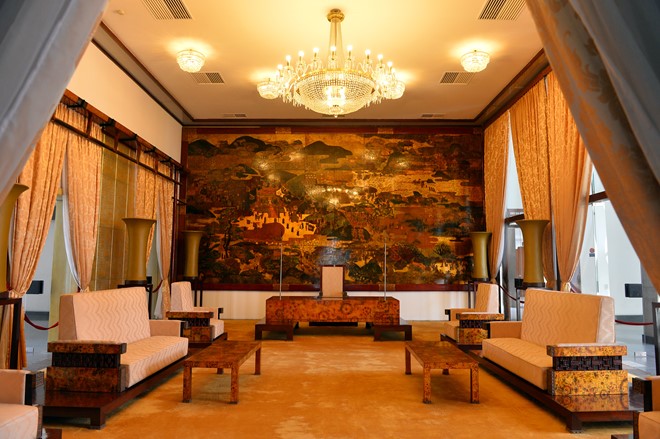
“Independence Palace Interior”
- Saigon Central Post Office
Saigon Central Post Office (Vietnamese: Bưu điện Trung tâm Sài Gòn) is a post office in the downtown Ho Chi Minh City, near Saigon Notre-Dame Basilica, the city's cathedral. The building was constructed when Vietnam was part of French Indochina in the late 19th century. 
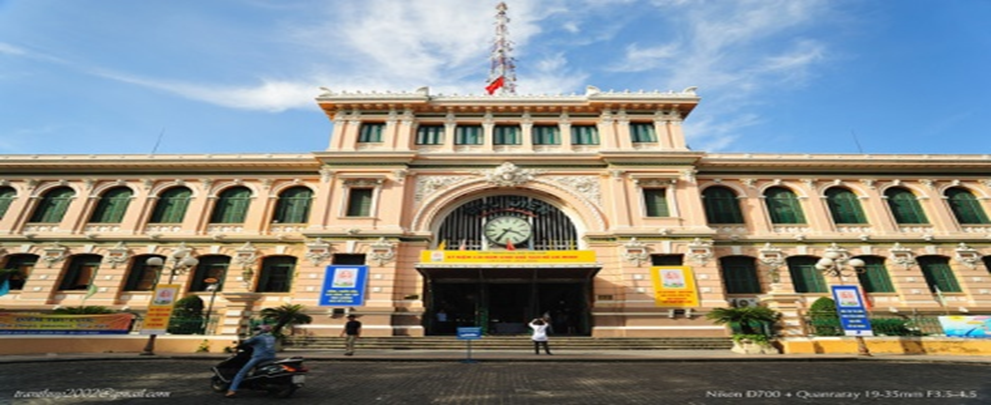
 The building is in superb condition and looks a little bit like a European train station with its huge clock displayed on the front and solid wrought iron fence. The exterior is picture postcard perfect with just enough “wedding cake” features in pink and white to make it beautiful with being kitsch. Along with Notre Dame across the road, it’s a huge favourite for wedding photos and you can see couple posing out the front on any day of the week. One of the very special highlights in the post office is Mr Duong Van Ngo, who sits serenely at the far end of the building, peering through a large magnifying glass under a sign reading “Information and Writing Assistance.”
The building is in superb condition and looks a little bit like a European train station with its huge clock displayed on the front and solid wrought iron fence. The exterior is picture postcard perfect with just enough “wedding cake” features in pink and white to make it beautiful with being kitsch. Along with Notre Dame across the road, it’s a huge favourite for wedding photos and you can see couple posing out the front on any day of the week. One of the very special highlights in the post office is Mr Duong Van Ngo, who sits serenely at the far end of the building, peering through a large magnifying glass under a sign reading “Information and Writing Assistance.”

Located at Lac Long Quan Street, District 11, Giac Vien is one of the oldest temples in Ho Chi Minh City. The pagoda’s style, decoration and arrangement of the worshipping shrines followed the typical ancient of pagodas built under Nguyen Dynasty of the 19th century, as well as of southern area. Because of its history, Giac Vien’s structure is similar to that of Giac Lam’s, with the main big sanctuary to worship Buddha, 2 corridors to the east and west to prepare and a spacious compartment at the rear.
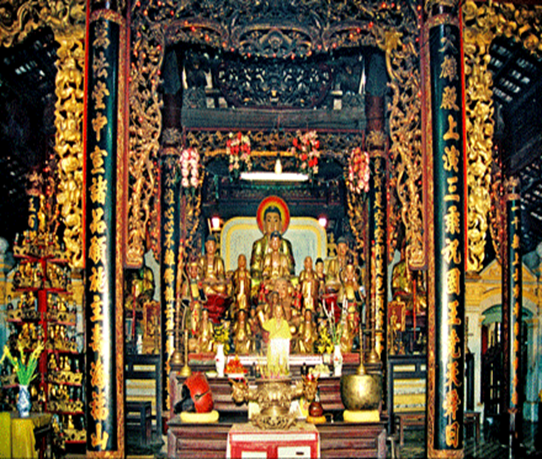
In a word, Saigon brings youthful and modern beauty, attracts tourists every minute every second. The crystallization of traditional history blend together the unique culture in the world has created a " Pearl of the Orient " charm. Saigon has brought in colorful colors, extroverted both preserve ancient sedimentary marks in each of the roof.